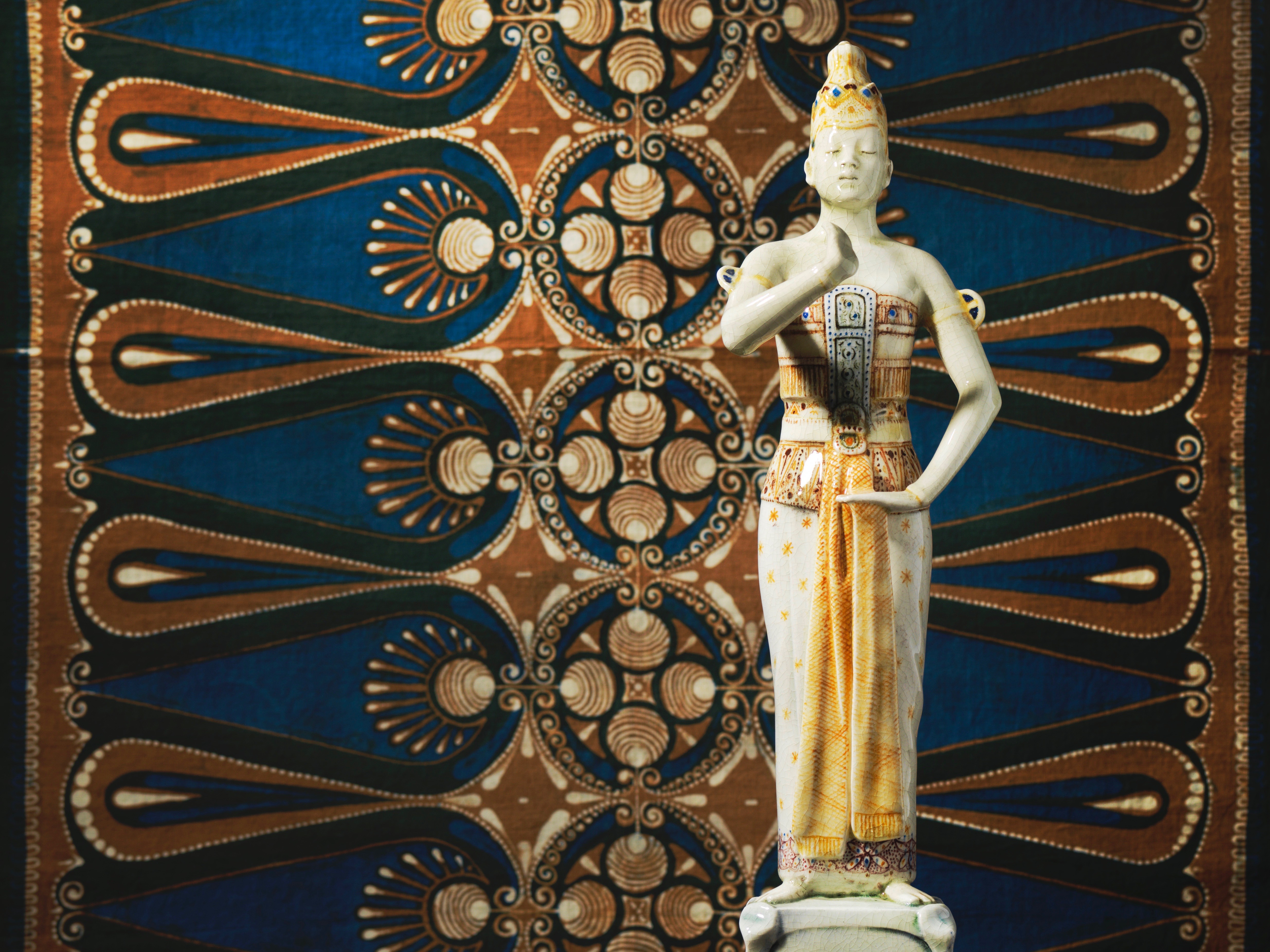Willem Heesen: Glass Poetry
After a career in design at the Glasfabriek Leerdam (Leerdam Glassworks), Willem Heesen (1925–2007) began a glass studio, De Oude Horn (The Old Horn). From here, he developed into one of the first free glass artists. His poetic work was often inspired by the river and landscape that surrounded him.
Free Glass Movement
Together with Sybren Valkema (1916–1996), Willem Heesen was at the beginning of the Free Glass Movement — the Dutch version of the international Studio Glass Movement. The two of them had previously come to know each other in 1943 at the Glass School in Leerdam. This school was founded by Andries Copier, who created a place to cultivate new and artistic talent for the Leerdam Glassworks.
Post-war glass designers
Andries Copier, who was the main designer of the factory, had the gift of attracting young talent. He recruited Heesen as a student at the Glass School, where the novice was taught by the recently appointed and promising young teacher in glass decoration Sybren Valkema. In the years to come, both men would become the most important post-war glass designers in the Netherlands.
Glass School
Willem Heesen studied at the Glass School between 1943 and 1947. Specifically, Valkema’s lessons were of great influence to him. Valkema, who had studied at the Royal Academy of Art in The Hague, not only created works of art made of glass but also engaged in several different disciplines, varying from graphic art to ceramics and textile. In all likelihood, Valkema recognised the myriad talents possessed by Heesen and therefore stimulated him to continue his studies at the Free Academy in The Hague.
Museum of Modern Art
After his studies, Heesen remained connected to the Leerdam Glassworks, where he designed several pieces of glass in the form of drinking vessels and vases, and decorations in the field of mass products. In 1950, his work was nominated for the Good Design Award of the Museum of Modern Art in New York. From 1960 onwards, he dedicated himself to designing Leerdam Unica (one-off pieces) and, in 1967, he became Chief Designer.
First Studio Glass Kiln of Europe
In 1964, an event took place that was decisive for the Dutch glass art scene. Sybren Valkema was appointed to represent the art federation known as the GKf at the founding assembly of the World’s Crafts Council. Moreover, Willem Heesen attended in his capacity as a designer at the Leerdam Glassworks. Together, they witnessed glass artist Harvey Littleton (US, 1922–2013) demonstrate a mobile glass kiln fuelled by gas that he had co-developed. Littleton demonstrated that it was possible for an artist to work independently, without the help of the industry, with liquid glass. Days after, Valkema and Heesen recognised the opportunity to blow glass themselves — led by Littleton. Back in the Netherlands, they continued their crash course of glassblowing in the Glass Factory, aided by experienced glassmakers who wanted to teach them the tricks of the trade on Saturdays and in the evening hours. These experiences would be invaluable for both designers. By the end of 1965, they were able to blow the first glass bell by means of a kiln built by Valkema. All the necessary equipment was donated by the factory in Leerdam since manual work had become obsolete due to the mechanised production of bottles and other container glass. One year later, the completed kiln in Amsterdam was inaugurated by Littleton, making the first studio glass kiln in Europe a reality.
Nature as a Source of Inspiration
Freed from the demands that functional application entails, the glass artist was free to make sculptural forms rather than vases and bowls. This is clearly shown in the works of Heesen and Valkema, which often are objects.
In 1977, Heesen left the factory to live in the nearby village of Acquoy and start his own glass studio, where his great talent could come to fruition. In particular, the surrounding nature around the Linge river formed a never-ending source of inspiration for Heesen. His unique glass objects communicate his fascination with underwater life and the influence of the seasons and the weather on the landscape. His works, that go by names such as Wuivend riet (Waving Reeds) and Waaiende boomtoppen (Swaying Treetops) are characterised by organic forms, serenity, and an authentic use of colours.
Studio De Oude Horn
Studio De Oude Horn named after a former water-pumping station in which Heesen established himself, became a meeting place for glass artists from the Netherlands and abroad. Furthermore, it was here that Andries Copier, already at a respectable age, worked together with Willem Heesen and Willem’s son Bernard.
The work of Willem Heesen can be found in the collections of the Stedelijk Museum Amsterdam, Museum Boijmans Van Beuningen in Rotterdam, and many other museums across the globe.
© Kunstconsult – 20th century art | objects
Reproduction and distribution of this text is only allowed with correct reference.









